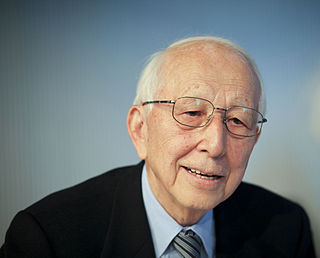 W
WTadao Ando is a Japanese self-taught architect whose approach to architecture and landscape was categorized by architectural historian Francesco Dal Co as "critical regionalism". He is the winner of the 1995 Pritzker Prize.
 W
WTakamitsu Azuma was a Japanese architect, and winner of the 1995 the Prize of AIJ. He was a follower of Le Corbusier and He was one of the most significant architects of the 20th century, combining traditional Japanese styles with modernism, and designed new types of houses symbolized living in the metropolis.
 W
WHiroshi Hara is a Japanese architect and author on architecture. His major works, including Kyōto Station, the Umeda Sky Building in Osaka, the Yamato International building in Tokyo, the Sapporo Dome in Hokkaidō, and other important structures in Japan, have earned many awards. With a doctorate in engineering, he was a professor at the University of Tokyo until 1997, and has held an emeritus position since that time.
 W
WIde Kaoru was Chief Architect of the Governor-General's Office in Taiwan, when the nation was part of the Japanese Empire. He held office in the Building and Repairs section of the Japanese Government-General in Taiwan, and was mainly involved with government and municipal building projects. His distinctive architectural ideas influenced the Taiwanese architectural profession. He was born in Gifu Prefecture Japan.
 W
WToyo Ito is a Japanese architect known for creating conceptual architecture, in which he seeks to simultaneously express the physical and virtual worlds. He is a leading exponent of architecture that addresses the contemporary notion of a "simulated" city, and has been called "one of the world's most innovative and influential architects."
 W
WHideto Kishida was a Japanese architect. His work was part of the architecture event in the art competition at the 1936 Summer Olympics.
 W
WFumihiko Maki is a Japanese architect who teaches at Keio University SFC. In 1993, he received the Pritzker Prize for his work, which often explores pioneering uses of new materials and fuses the cultures of east and west.
 W
WHidetoshi Nagasawa was a Japanese sculptor and architect, who lived and worked in Italy from 1967 until his death in 2018.
 W
WUzō Nishiyama was a Japanese modernist architect, city planner, and architectural scholar. He is noted for his application of methods of scientific research to the study of architecture and urban planning. Nishiyama served as a professor at Kyoto University for over 25 years, and produced a number of seminal writings on architectural theory.
 W
WJunzo Sakakura was a Japanese architect and former president of the Architectural Association of Japan.
 W
WKazuyo Sejima is a Japanese architect. She is known for designs with clean modernist elements such as shiny surfaces, squares and cubes. Along with and Ryue Nishizawa, she has worked on several projects in Germany, Switzerland, France, England, the Netherlands, United States, and Spain. Many of their designs like the Rolex Learning Center at EPFL the New Museum in the Bowery District in New York City as well as the Glass Pavilion for the Toledo Museum of Art involve large windows and public open space to interact with the world around the architecture. In 2010, Sejima was the second woman to receive the Pritzker Prize, which was awarded jointly with Nishizawa.
 W
WSeiichi Shirai(ja:白井晟一) was a Japanese architect. His eccentric, mysterious and extremely refined architectural language made him highly esteemed in his native country of Japan.